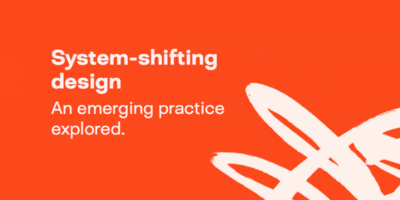University of Ulster

Working with the Design Council has introduced us to new methodologies and brought greater structure to our product development process.
Caroline McGoran, University of Ulster Technology Commercialisation Executive
The University of Ulster has a long and successful track record in creating commercial value from research knowledge. The Office of Innovation, which drives and manages the commercialisation of technology, is responsible for over $43m of IP licences, oversees more than 180 patents and manages 15 spin-out companies.
However, despite their great track record, when it came to their new product SolaCatcher, the University was struggling to define their business model and develop their brand. They approached us for tailored business support and coaching.
Challenge
The University of Ulster was in a great position to take the SolaCatcher - a low cost, compact solar thermal unit that preheats domestic hot water while reducing other energy requirements - to market. They had already patented the entire concept and identified their three main potential markets. They had also secured proof of concept funding to cover the cost of developing working prototypes.
The challenge was how to manufacture the product at a cost that made the payback period for the end user an attractive proposition
Ian Ferris, Design Associate, Design Council
However, a number of fundamental challenges still remained. The University needed to:
- Define the proposition and develop a product with the right cost-to-payback ratio
- Identify the appropriate business model to commercialise the technology
- Design communications materials to effectively communicate the proposition to potential investors
These objectives could not be addressed without either a manufacturing or installation cost model – both of which were needed before detailed discussions with potential commercial partners could start.
What we did
We partnered the University of Ulster with our Design Associate, Ian Ferris. Ian has over 25 years experience as a design innovation expert and is a specialist design mentor for the Technology Strategy Board, so was perfectly placed to guide the research team on how to use design tools to speed up the commercialisation process.
"We already had excellent in-house design capability," Caroline McGoran, the University's Technology Commercialisation Executive explained, "but we needed additional guidance to test and develop an appropriate tool kit we could then apply to other projects moving forward."
We had previously commissioned designers for product development, prototyping, visualisation and developing brand identities. However, the role of design had not been considered as integral in the commercialisation process."
Caroline McGoran, University of Ulster Technology Commercialisation Executive
Ian worked with the team to conduct detailed market analysis. They then produced a communications pack to tell the story of the concept, the technology, the product and its potential to gauge interest among commercial businesses in partnering and investing in the development of a working prototype.
Having produced a detailed design brief, Ian recommended a number of external designers with appropriate skills and expertise. Designers Peter Bessey and Richard McElveen were appointed to help develop the cost model, explore ideas for how the product might look and produce visualisations and marketing materials to explain the concept.
The communications materials were ready for Ecobuild 2012, the world’s premier event for sustainable design, construction and the built environment. The University team presented SolaCatcher at the event to identify potential partner companies with which it could then explore how best to take the final product to market.
Impact
Ian helped the team to understand the value of a design-led approach to commercialising research.
They were able to accelerate the commercialisation of their research projects, build links with design communities, and leave a legacy of increased design capability. In 2012 SolaCatcher won a place in Make it in Great Britain, a government campaign to find the UK’s next big pre-market products, processes and concepts.
The approach we learned to creating, visualising and testing a hypothesis is definitely something we will now use in our own commercialisation toolkit.
Caroline McGoran, University of Ulster Technology Commercialisation Executive
Subscribe to our newsletter
Want to keep up with the latest from the Design Council?

